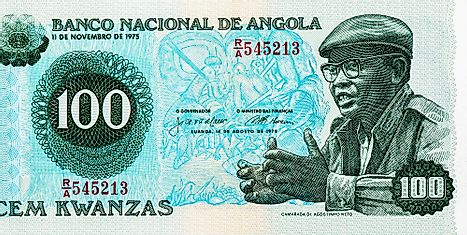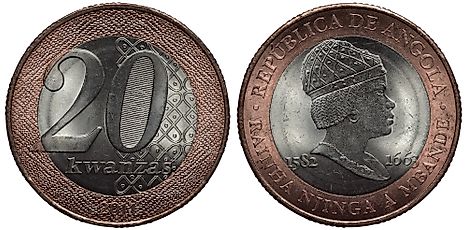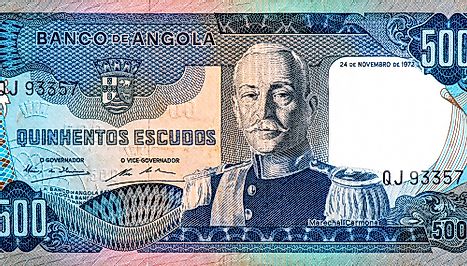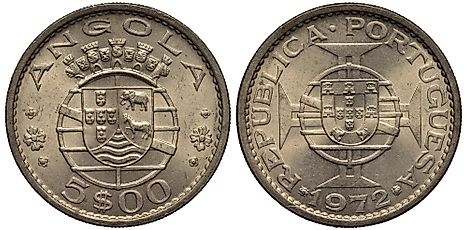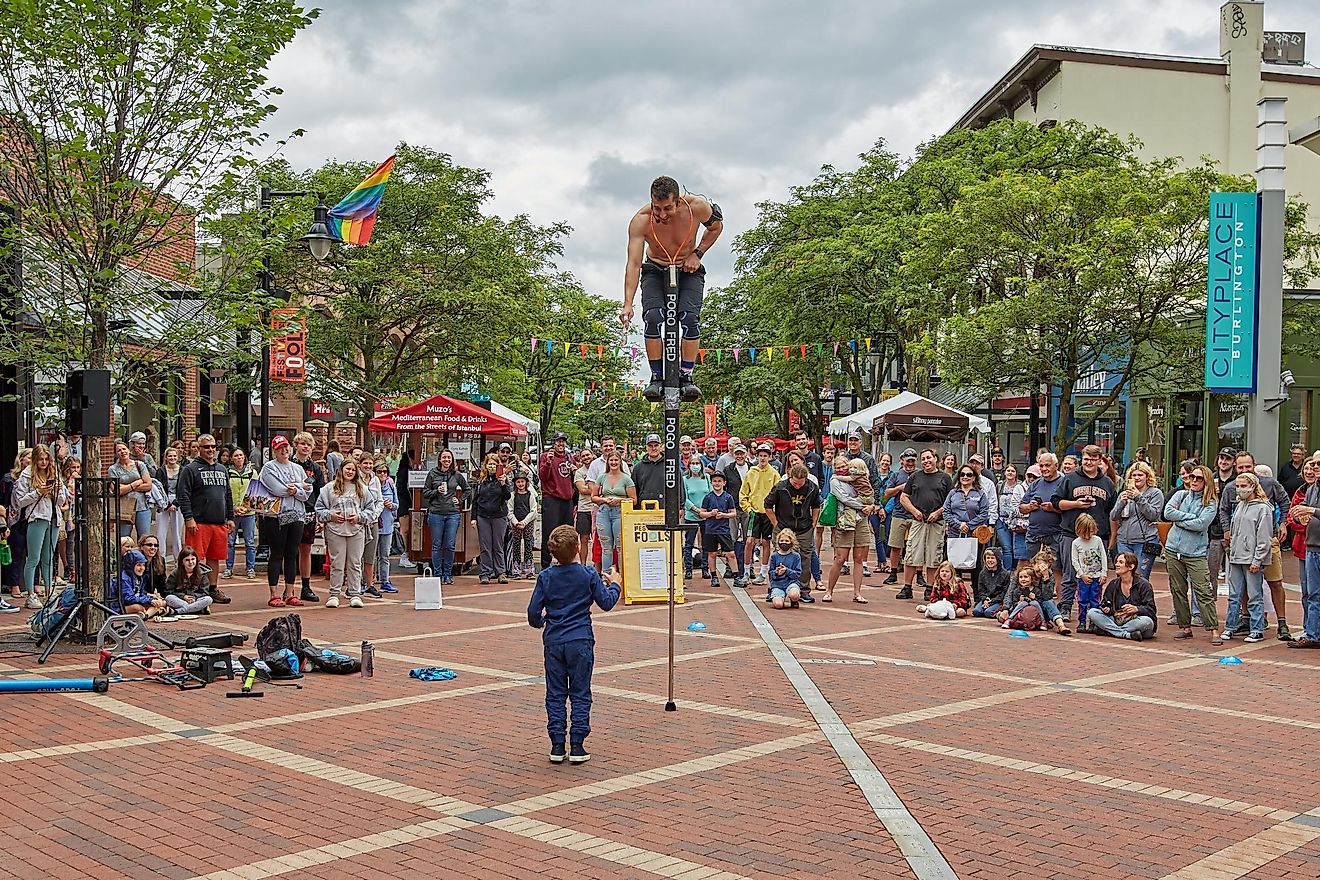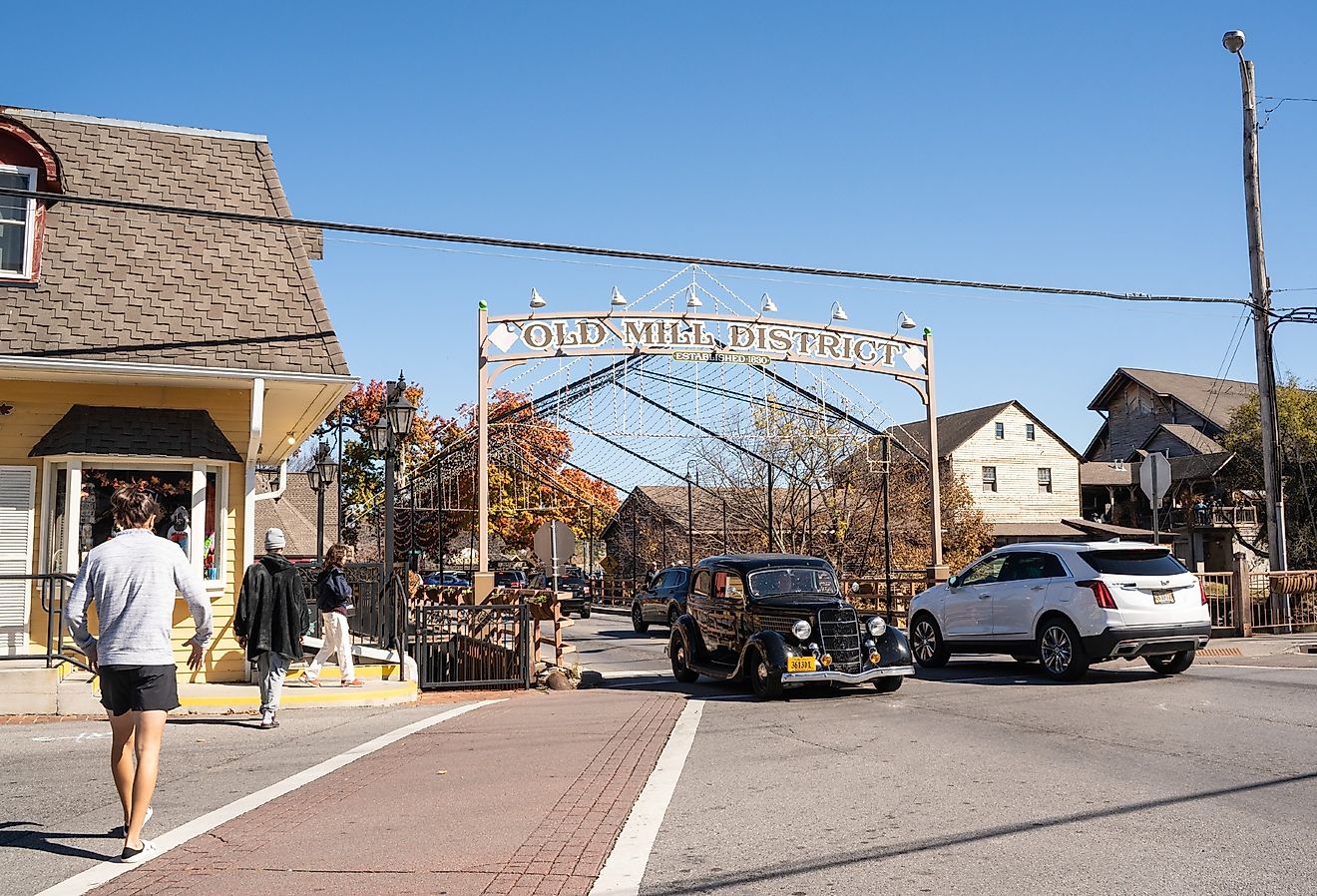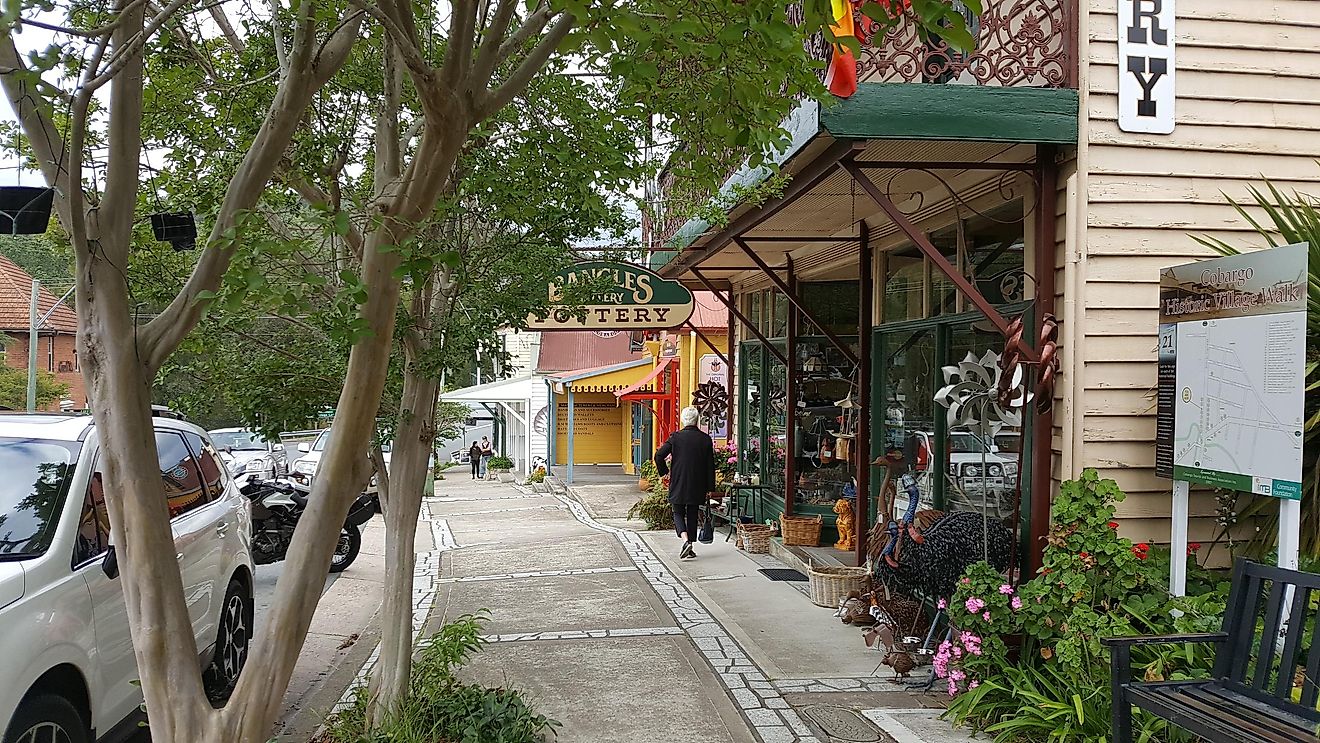Flags, Symbols & Currency of Angola
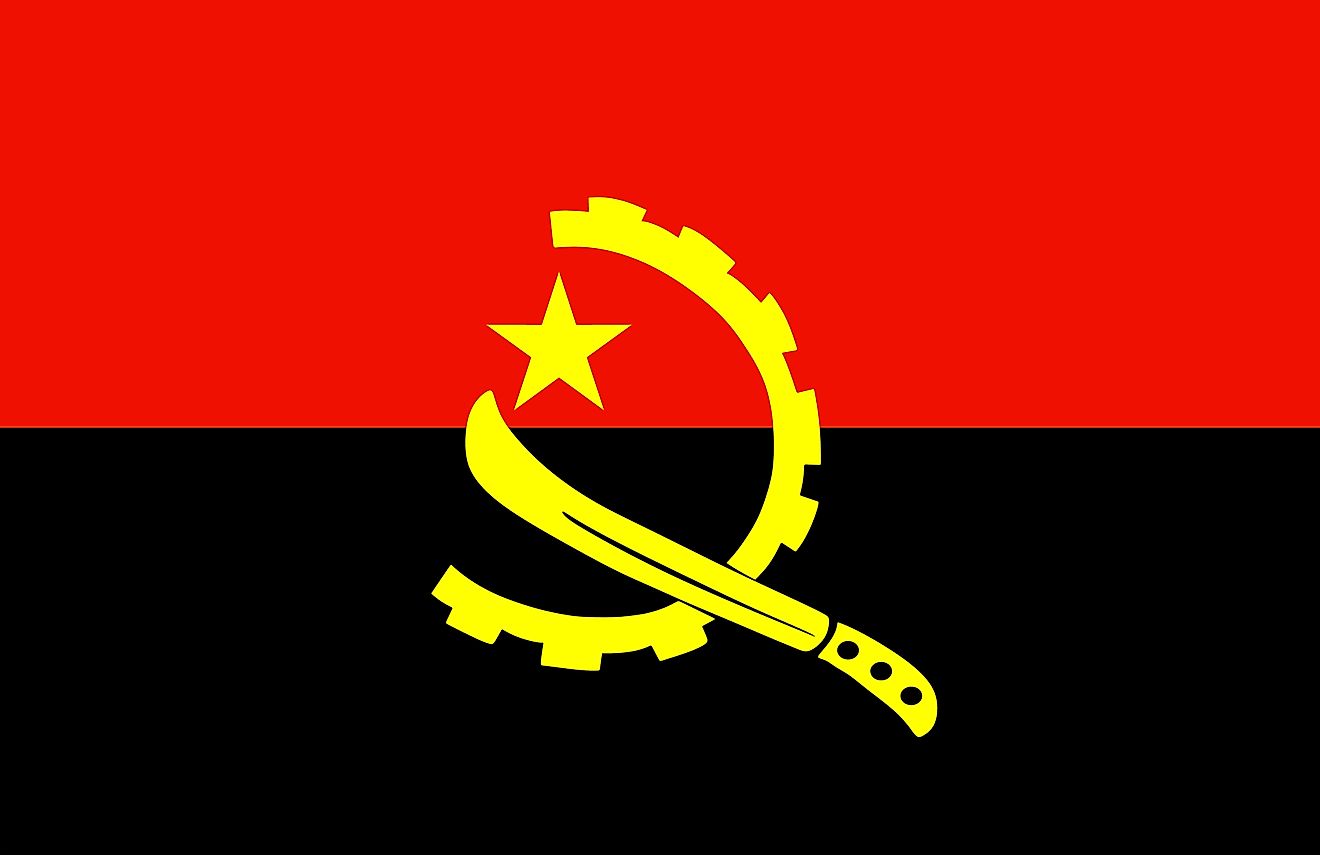
The National Flag of Angola was officially adopted on November 11, 1975, when the country established its independence from Portuguese colonial rule. The flag's current design is said to have been inspired by the flag of the Popular Movement for the Liberation of Angola (PMLA), a political party that first promoted the movement for Angola's independence.
The flag features two equal horizontal bands of different colors, each taking up half of the flag's background. The top band is red in color, while the bottom band is black. Each of the colors and symbols on Angola's national flag has a very special meaning for the country. Red color symbolizes bloodshed during the colonial oppression, Angola’s independence struggle as well as for the defence of the country; while black color is meant to represent the people of Africa and the continent as a whole. At the center of the flag is a golden yellow emblem. The golden color is symbolic of the country’s mineral wealth. This emblem is made up of the right half of a cogwheel (used for moving gears), with a machete positioned across its bottom half (that is said to be inspired by the hammer and sickle), and a five-pointed star at the top and center of the open cog. The flag has a height to width proportion ratio of 2:3.
History of the Flag of Angola
There have been several flags throughout the history of Angola. For 400 years (from 1575 until 1975), Angola was governed as a colony of Portugal, and during this time Angola was represented by the flag of Portugal. This flag is a bicolor with vertical bands. The left band is dark green and takes up about one-third of the background, while the remainder of the background is red. At its center is a golden yellow colored sphere with a coat of arms situated on top.
In 1996, the government of Angola considered changing its flag. The proposed design was a tricolor of equally measured horizontal bands. The top band was red, followed by green in the middle, and a black band at the bottom. However, the new flag's design was not ratified. In 2003, Angola debated its flag design for a second time. This time, the discussion focused on having a flag that appeared more positive. The proposed design had a red, white, and blue background. It had two narrow blue stripes at the top and bottom which were outlined by a narrower white stripe. The center band of the proposed flag was red and a golden yellow sun symbol was featured at the center.
Symbols of Angola
National Coat of Arms of Angola

The emblem of Angola was adopted in 1990 and reflects the recent past of the new nation. The emblem features a machete and hoe symbolizing agricultural workers and the revolution the nation went through to gain independence. The yellow five-pointed star represents international solidarity and progress, and the rising sun a symbol of new beginnings. Encircling the emblem is half of a cog-wheel, representing the industrial sector and its industrious employees; and half of a vine for the coffee and cotton industry. The open book below is a symbol of education, and the banner underneath reads: "Republic of Angola" in Portuguese.
National Motto
Virtus Unita Fortior (“Virtue is stronger when United”)
National Anthem
- Anthem Title: “Angola Avante”/ “Angola onward”
- Music Composer: Rui Alberto Vieira Dias Mingas
- Lyricist: Manuel Rui Alves Monteiro
- Date of Adoption: November 1975
The national anthem of Angola is “Angola Avante”/ “Angola onward”. Manuel Rui Alves Monteiro – an Angolan writer had penned the lyrics, with Rui Alberto Vieira Dias Mingas composing the music. The national anthem was officially adopted in November 1975, upon independence from Portugal. The national anthem has been enshrined under Article 164 of the Constitution of Angola. The lyrics of the anthem allude to how the country and its people will progress in the future. The lyrics also refer to several key events in the history of MPLA (People’s Movement for the Liberation of Angola).
Angola Avante (Portuguese)
O Pátria, nunca mais esqueceremos
Os heróis do quatro de Fevereio.
O Pátria, nós saudamos os teus filhos
Tombados pela nossa Independência.
Honramos o passado e a nossa História,
Construindo no Trabalho o Homem novo,
Honramos o passado e a nossa História,
Construindo no Trabalho o Homem novo.
Chorus (twice)
Angola, avante!
Revolução, pelo Poder Popular!
Pátria Unida, Liberdade,
Um só povo, uma só Nação!
Levantemos nossas vozes libertadas
Para glóriados povos africanos.
Marchemos, combatentes angolanos,
Solidários com os poroso primidos.
Orgulhosos lutaremos Pela Paz
Com as forças progressistas do mundo.
Orgulhosos lutaremos Pela Paz
Com as forças progressistas do mundo.
CHORUS (twice)
Angola, avante!
Revolução, pelo Poder Popular!
Pátria Unida, Liberdade,
Um só povo, uma só Nação!
Angola Onward
Oh Fatherland, we shall never forget
The heroes of the Fourth of February.
Oh Fatherland, we salute your children
Who died for our Independence.
We honour the past and our History,
As by our work we build the New Man.
We honour the past and our History,
As by our work we build the New Man
Chorus (twice)
Forward, Angola!
Revolution through the power of the People:
A United Country, Freedom,
One People, one Nation!
Let us raise our liberated voices
For the glory of the peoples of Africa.
We shall march, Angolan fighters,
In solidarity with oppressed peoples.
We shall fight proudly for Peace
Along with the progressive forces of the world.
We shall fight proudly for Peace
Along with the progressive forces of the world.
Chorus (twice)
Forward, Angola!
Revolution through the power of the People:
A United Country, Freedom,
One People, one Nation
The Currency of Angola is the Angolan kwanza
The Angolan kwanza (Kz; AOA) is the official currency of Angola. It was introduced to the country in 1999, as a replacement for the kwanza reajustado (AOK). The name of the currency is derived from the Kwanza River. The Angolan kwanza is managed and issued by the Banco National de Angola (National Bank of Angola).
The currency is subdivided into coin denominations of 100 centimos. Between 2012 and 2014, new coins in denominations of 20, 10, 5, and 1 kwanza, together with 50 centimos, were introduced to the country. On March 22, 2013, the National Bank of Angola issued a new series of banknotes in denominations of 500, 200, 100, and 50 kwanzas. In May of the same year, denominations of 5,000, 2,000, and 1,000 kwanzas were issued. The bank also issued banknotes in denominations of 10 and 5 kwanzas in 2017, but as part, the family of banknotes first introduced in 2012. The 1, 5, 50 and 10 centimo denominations are rarely used.
Historical Currencies of Angola
Following the independence of Angola, the first kwanza (AOK) was introduced in 1977 to replace the escudo at par. This first kwanza was subdivided into 100 Iwei and coins were produced in denominations of 10, 5, 2, 1, and 50 Iwei. In 1978, 20 kwanza coins were introduced to the country but then discontinued in 1979. In 1977, the National Bank of Angola also introduced banknotes dated '11 DE NOVEMBRO DE 1975' in denominations of 1,000, 500, 100, 50, and 20 kwanzas. However, in the year that followed the 20 kwanza banknote was replaced by a coin.
The Novo kwanza (AON) was introduced in Angola in 1990, at a rate of 1 Novo kwanza = 1 kwanza. The kwanza reajustado (AOR) was introduced in Angola in 1995. The currency replaced the Novo kwanza at a rate of 1,000 to 1. Due to the low value of the old kwanza, the smallest issue of the kwanza reajustado notes was the 1,000 denomination, the rest being 5,000,000, 1,000,000, 500,000, 100,000, 50,000, 10,000, and 5,000 kwanzas. Since 1999, the Angolan kwanza (AOA) has been in circulation. At a rate of 1,000,000 to 1, the kwanza was the replacement for the kwanza reajustado.
